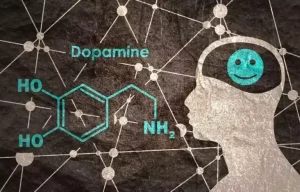
This substance is a potent inhibitor of the enzyme acetaldehyde dehydrogenase, so it increases the presence of acetaldehyde, and it promotes its effects.48,50 The harmful effects of this substance have been found to be exerted at various levels, in both animal and human models. The pathophysiology of AC involves a combination of direct toxic effects of alcohol on the myocardium, oxidative stress, mitochondrial dysfunction, and genetic susceptibility. Regional wall motion abnormalities are not uncommon, but they are usually less prominent than those observed in persons with ischemic heart disease. Regarding ICD and CRT implantation, the same criteria as in DCM are used in ACM, although it is known that excessive alcohol intake is specifically linked to ventricular arrhythmia and sudden cardiac death71. As it is not uncommon in ACM for patients to experience a significant recovery of systolic function, it is particularly challenging in this disease to decide the most appropriate time to implant an ICD and whether it is necessary to replace a previously implanted device. Future studies in ACM should also address this topic, which has important economic consequences.
Cardiac Effects of Alcohol
The cardiovascular system is, after the liver and gastrointestinal system, the second most affected system by global ethanol toxicity 1,33,34. The effect of a low dose of alcohol consumption on the cardiovascular system has been also extensively evaluated with evidence of a dual effect, beneficial for coronary artery disease at low doses 44 but reversing to a damaging effect at moderate to high doses 19. Although there is beneficial potential in some patients, the coexistence of increased risk of cancer, neurological brain damage, and the high risk of ethanol addiction makes it necessary to discourage this low-dose consumption in the general population 19,41,45. Specific caution should be recommended regarding children or adolescents 4 and women 46, who are more susceptible to the damaging effects of ethanol at the same doses of consumption as men. Similarly, patients suffering from other ethanol-related diseases such as liver cirrhosis or brain atrophy should completely suppress their ethanol consumption 47,48.
- The major risk factor for developing ACM is chronic alcohol use; however, there is no cutoff value for the amount of alcohol consumption that would lead to the development of ACM.
- For patient education information, see the Mental Health Center, as well as Alcoholism, Alcohol Intoxication, Drug Dependence and Abuse, and Substance Abuse.
- These may be detected with echosonography in around one-third of high-dose chronic consumers with preliminary evidence of subclinical left-ventricle (LV) diastolic dysfunction before progression to subclinical LV systolic dysfunction 57.
Left ventricular filling impairment in asymptomatic chronic alcoholics

Your doctor might prescribe ACE inhibitors and beta-blockers to help lower your blood pressure. If your heart is severely damaged, your doctor may recommend an implantable defibrillator or pacemaker to help your heart work. Alcohol-induced cardiomyopathy treatment includes a combination of lifestyle modifications, pharmacological treatment, management of arrhythmia, and supportive care. This review will provide an updated view of this condition, including its epidemiology, pathogenesis, diagnosis, and treatment (Graphical Abstract). In addition to the assessment of the status of the coronary arteries, cardiac catheterization may help obtain useful information regarding cardiac output, the degree of aortic or mitral valvular disease, and cardiac hemodynamics and filling pressures. Importantly however, remember that much of this information can be derived or inferred from the results alcoholic cardiomyopathy symptoms of noninvasive testing.
Familial dilated cardiomyopathy: A multidisciplinary entity, from basic screening to novel circulating biomarkers
These authors found a relationship between the reduction or cessation of alcohol consumption and higher survival rates without a heart transplant. Chronic ethanol misuse clearly depresses protein synthesis and degradation, involving both structural and non-structural heart proteins 104,128. At a pathological level, sarcomere Z-line distortion and disruption of the sarcomere pattern leads to myocytolysis 107,129. Myocytolysis is evident through focal myofiber dissolution, cell vacuolization, and fiber disarray 19 (Figure 2). The sarcomere complex is early affected by ethanol, decreasing the titin content, a protein that is responsible for sarcomere relaxation and LV distensibility 130.


It was suspected that malnutrition, frequently related to chronic alcohol misuse, was the origin of ACM 6,67. However, it has been evidenced that ACM may develop in the absence of protein or caloric malnutrition 38. However, nutritional factors may worsen the natural course of ACM and should be avoided 18,19. One of the characteristics that makes ethanol harmful is its systemic toxic effect on the human body 10,11. It has been described as having some kind of effect in all human body organs either in acute or chronic consumption 11,12. The liver is the most affected organ, since ethanol is mostly metabolized there 11,13, but gastrointestinal, central, and peripheral nervous systems; the heart and vascular system; endocrinological systems; nutrition; and musculo-skeletal systems are clearly affected 10.
- The quantity of alcohol consumed daily and the duration of alcohol misuse are linked to the development of ACM, although the precise thresholds for causing cardiac dysfunction remain unknown.
- This study included not only DCM, but also all causes of left ventricular dysfunction, including hypertensive heart disease, ischemic cardiomyopathy and heart valve disease.
- The diagnosis of alcohol-induced cardiomyopathy in our patient relied on the absence of known causes of dilated cardiomyopathy, the identification of excessive alcohol consumption and the improvement of cardiac function after the abstention from alcohol ingestion.
- More recently, Lazarevic found a modest increase in end-systolic and diastolic left ventricular volumes and a subsequent thickening of the posterior wall in a cohort of alcoholics consuming at least 80 g during 5 years23; however, no differences in systolic function were observed.








Recent Comments